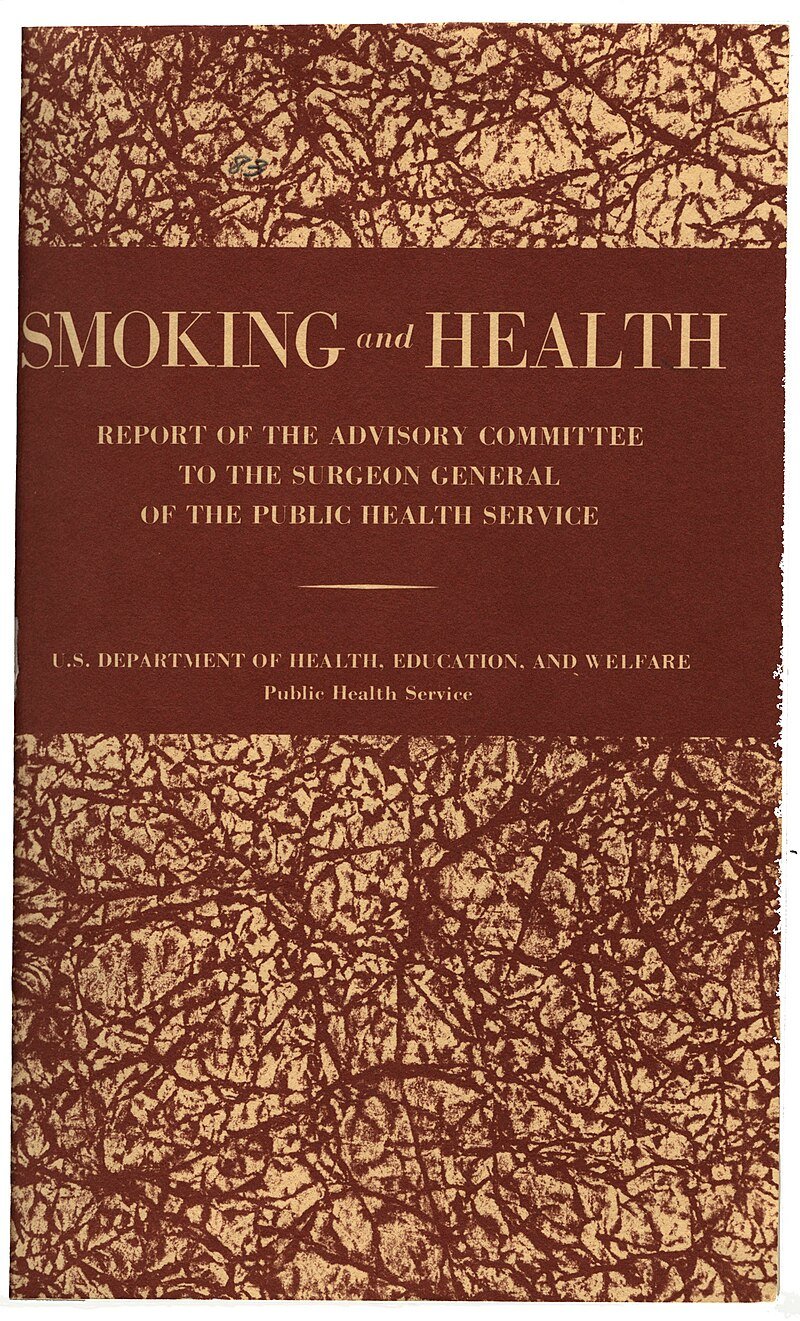In the history of public health, there are certain milestones that have had a profound impact on society. One such milestone was the Surgeon General’s Report on Smoking (1964), released on the 11th of January, which marked a turning point in the fight against smoking-related diseases. This groundbreaking report, authored by Luther Terry, the U.S. Surgeon General at the time, conclusively linked cigarette smoking to lung cancer and other serious health conditions.
The Surgeon General’s Report on Smoking (1964) was a comprehensive study that brought together a wealth of evidence from various scientific studies and research papers. It provided undeniable proof that smoking was not just a bad habit but a major public health concern. The report stated that smoking was responsible for a significant increase in the risk of developing lung cancer, as well as heart disease, chronic bronchitis, and other respiratory ailments.
Prior to the release of this report, there was a lack of awareness about the dangers of smoking and its impact on public health. Cigarette smoking was widely accepted and even glamorized in popular culture. However, the Surgeon General’s Report on Smoking (1964) changed the narrative completely. It served as a wake-up call for the entire nation, forcing people to confront the harsh reality of smoking-related diseases.
The report’s findings were based on extensive research and analysis of existing studies, including epidemiological data, laboratory experiments, and clinical observations. It highlighted the harmful effects of the chemicals present in tobacco smoke, such as nicotine, tar, and carbon monoxide. These substances were identified as the primary culprits behind the increased risk of developing various diseases.
One of the key aspects of the Surgeon General’s Report on Smoking (1964) was its emphasis on the importance of prevention and public education. The report recommended implementing comprehensive tobacco control programs, including efforts to reduce smoking initiation among young people, increasing taxes on tobacco products, and implementing smoke-free policies in public places.
The release of the report had a profound impact on public health policy and led to significant changes in tobacco regulation. It prompted the U.S. government to take action and implement measures to reduce smoking rates. As a result, warning labels were introduced on cigarette packages, restrictions were placed on tobacco advertising, and smoking was banned in various public spaces.
Furthermore, the Surgeon General’s Report on Smoking (1964) played a crucial role in changing societal attitudes towards smoking. It shattered the perception of smoking as a glamorous and sophisticated activity, and instead portrayed it as a deadly habit. The report’s findings were widely covered by the media, creating public awareness and sparking conversations about the dangers of smoking.
Over the years, the Surgeon General’s Report on Smoking (1964) has been cited as a landmark document in the field of public health. It has paved the way for further research and studies on the effects of smoking, leading to a better understanding of the risks associated with tobacco use. Subsequent reports have reaffirmed the initial findings and expanded on the range of diseases linked to smoking.
In conclusion, the Surgeon General’s Report on Smoking (1964) was a pivotal moment in public health history. It provided compelling evidence linking cigarette smoking to lung cancer and other diseases, leading to significant changes in public health policy, advertising regulations, and societal perceptions. The report’s impact continues to be felt today, as efforts to reduce smoking rates and improve public health continue.
SEO Excerpt:
The Surgeon General’s Report on Smoking (1964) was a groundbreaking study that conclusively linked cigarette smoking to lung cancer and other diseases. This landmark report led to significant changes in public health policy, advertising regulations, and the general perception of smoking in society. Learn more about this pivotal moment in public health history.

